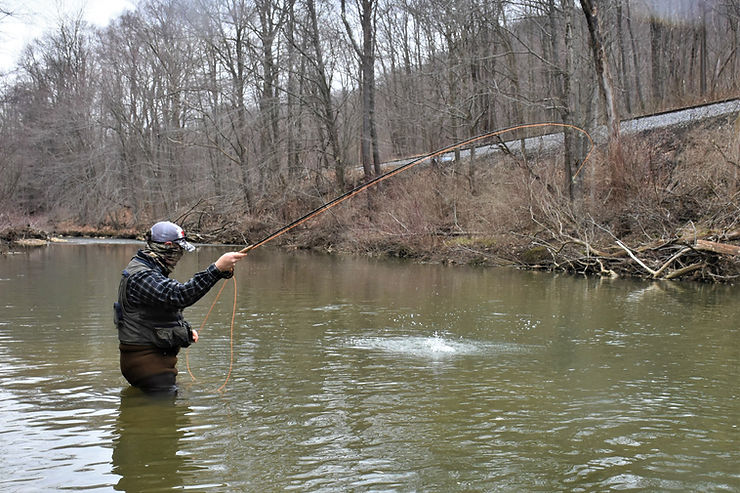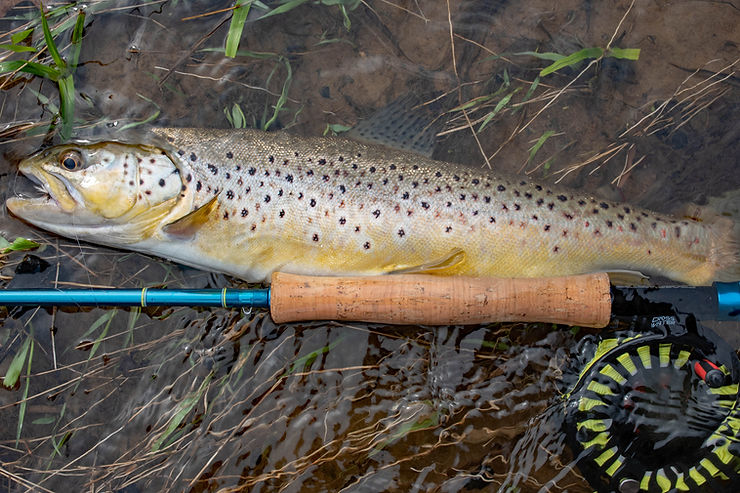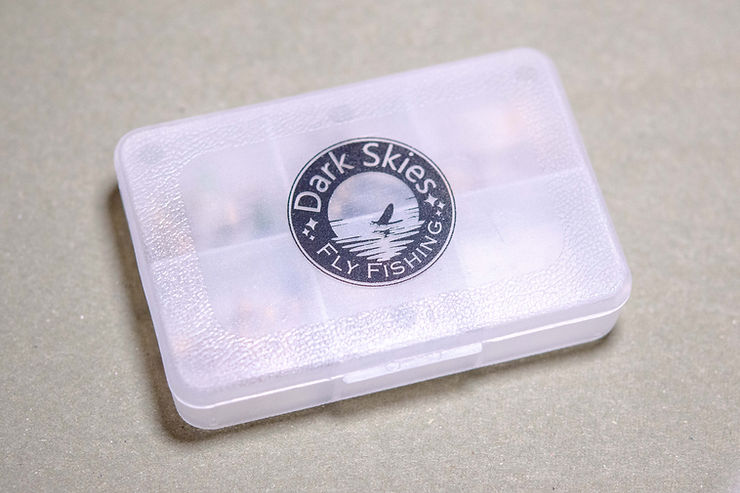5 Tips for Buying Your First Fly Rod

As you gear up to begin fly fishing, choosing your first fly rod can seem like a daunting task. With so many models, weights, action, and other variations available, it can be hard to know where to begin. If you follow a few basic steps, though, the process doesn’t have to be complicated.
First, decide which species you want to target.
Fly rods are classified on a weight scale of 0-16, with 0-3-weight considered ideal for panfish and 15-16-weight heavy enough to land shark. Most fly rods fall somewhere in the middle, in the 5-6-weight range; they’re perfect for trout yet still light enough to not overpower panfish. My personal all-purpose rod is a 9-foot, 6-weight, because it handles panfish and trout well but has the backbone to land bass and Steelhead. It’s difficult to find a one-size-fits-all fly rod, but (for me) the 6-weight comes very close.
Second, decide on a rod length.
For years, I used rods in the 7 ½-8-foot range and had great experiences, but my first 9-foot rod was a game changer. For a beginner, learning to cast a fly, which is not a simple feat, is easier with longer rods. Shorter fly rods require more technical precision and timing whereas a longer rod enables you to get more distance without as much effort. The main advantage of a longer rod, though, is that it allows you to reach out over tricky currents and mend line to get better drifts. This alone will decrease your learning curve and make you more successful.
Third, decide on the action.
Fly rods come with three types of action: slow, medium, and fast. Slow action means that the rod flexes throughout 90% of its length, measure from handle to tip, when casting. Medium action flexes through the top 60%, and fast action flexes through the top 30%. Generally speaking, slow action rods require a longer casting stroke, and your timing has to be spot on to be effective. These rods tend to feel more “whippy” and can difficult to master for beginners.
Medium and fast action fly rods are ideal for new anglers and cover a variety of situations. Medium action rods can be great for panfish and casting dry flies, but fast action rods have the necessary stoutness for casting streamers and nymphing rigs with strike indicators, which makes up the majority of time spent on the water.

(Photo: Rod and reel combos, such as the Redington Crosswater, are a great option for people just getting started in fly fishing.)
Fourth, consider purchasing a fly rod/reel combo.
The simplest way to approach a fly rod purchase is to buy a combo kit where the rod, reel, and line weights are already correctly matched. A fly rod, after all, is just one part of the equation, and pairing it with the right reel and line is necessary in order to get the most out of the rod.
In my experience, if a combo kit costs less than $100, it’s probably not worth buying. A fly rod that is difficult to cast can cause more frustration than joy and ultimately lead to giving up on fly fishing. However, there are numerous combo kits in the $150-250 range that are excellent, and many of them from well-known, high brands within the industry such as Orvis and Redington.
Fifth, make a budget.
I have two mottos when it comes to purchasing any new gear: buy the best that I can afford and don’t be afraid to invest in quality. One year, I abandoned that philosophy and bought a cheap fly rod and reel combo kit for a kid I knew who wanted to learn the sport. First time out, he grew frustrated over his inability to cast and handed me the rod so that I could show him how to do it. Well, I couldn’t cast with that rod, either! It lacked sensitivity and felt as clunky and awkward as a telephone pole in my hand.
Bottom line, you generally get what you pay for with fly fishing gear, especially in regards to rods. Read reviews whenever possible. Visit your local fly shop and ask questions. The best way to decide whether a rod is right for you is to handle a few models. Some fly shops have areas where you can practice casting the rod prior to purchase, too.
Above all, don’t buy a fly rod just because it’s cheap. Although it can be hard to justify the expense when you’re just getting started, a quality fly rod can shorten the learning curve and make the experience more fun.
Check out our online store for flies, assortments, and more.
Use the promo code 25OFF at checkout!
Shop Now
